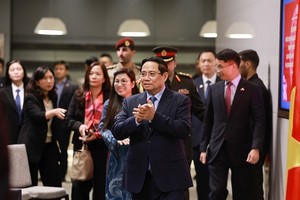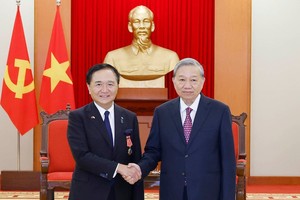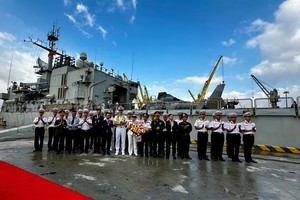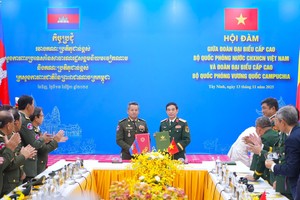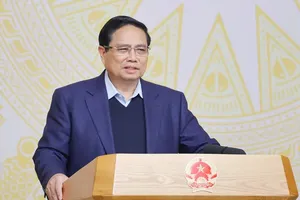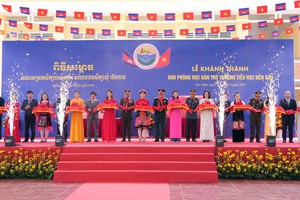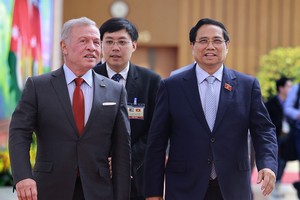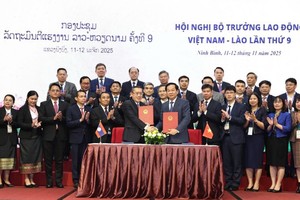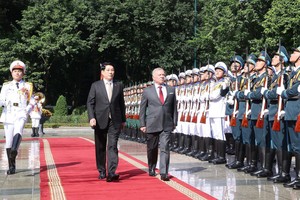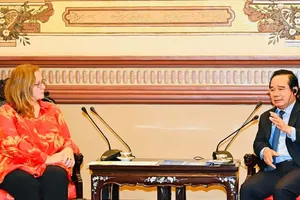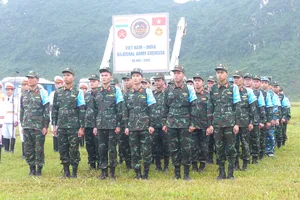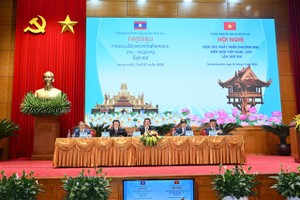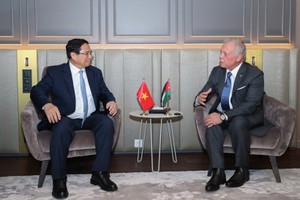With the recent passing of former President Tran Duc Luong, Vietnam mourns a leader whose legacy spans some of the most transformative decades in the country’s modern history. From the early days of Doi Moi to Vietnam’s entry into the World Trade Organization, his strategic vision and diplomatic skill helped reshape the nation’s global standing.
The story of former President Tran Duc Luong’s contributions is deeply intertwined with that of Mr. Luong Van Tu, former Deputy Minister of Trade, who worked closely with the late President throughout numerous critical junctures.

In 1987, Mr. Luong Van Tu was appointed Chief Representative of Vietnam’s Trade Office in Singapore—an important position at a critical moment, as Vietnam began opening its economy and implementing the Doi Moi reform policy.
In September that year, he had the honor of welcoming Deputy Chairman of the Council of Ministers Vo Van Kiet (now referred to as Deputy Prime Minister) on an official visit to Singapore. During their meeting, Mr. Vo Van Kiet entrusted him with a significant mission: to take the initiative in normalizing diplomatic relations between Vietnam and Singapore, and to help prepare for Vietnam’s accession to the Association of Southeast Asian Nations (ASEAN).
On November 1, 1991, Mr. Vo Van Kiet—by then Chairman of the Council of Ministers—returned to Singapore on an official visit, accompanied by Deputy Chairman Tran Duc Luong. This visit formally established diplomatic ties between the two countries.
Following the official welcome, Mr. Tran Duc Luong led a series of meetings with Singapore’s Ministry of Trade and leading enterprises to present Vietnam’s Investment Law and encourage Singaporean investment in Vietnam. This marked a strategic effort to attract capital, advanced technology, and managerial expertise from developed nations in the region.
In the following Party Congress term, Mr. Tran Duc Luong was elected President of Vietnam. In 1999, Mr. Luong Van Tu had the honor of accompanying him on a state visit to Malaysia. At that time, Southeast Asia was facing a severe economic crisis. However, thanks to Vietnam’s reform efforts, its economy had stabilized and was growing steadily. The country had emerged as a significant exporter of rice and seafood, underpinned by a real-sector economy rather than financial speculation. As a result, Vietnam remained relatively insulated from the economic shocks that hit other ASEAN countries.
Later that year, Mr. Luong Van Tu also joined President Tran Duc Luong on an official visit to Thailand aimed at enhancing diplomatic relations and expanding economic cooperation. The Thai Minister of Commerce remarked to him that Thailand placed great importance on the visit and that the King of Thailand would personally receive the President of Vietnam.
At that time, although Vietnam had joined ASEAN and normalized ties with the US, bilateral trade between the two countries remained constrained due to the lingering US embargo. Under the direction of the Politburo and the Prime Minister, the Ministry of Trade—where Mr. Luong Van Tu played a key role—spearheaded negotiations for a Bilateral Trade Agreement (BTA) with the US.
By mid-2000, the agreement was signed, awaiting ratification by both governments. In November that year, President Tran Duc Luong officially invited US President Bill Clinton to visit Vietnam—marking the first visit by a sitting US president. This historic milestone significantly advanced the normalization and expansion of Vietnam-US relations. The agreement officially came into effect on December 10, 2000. At the time, however, Vietnam’s trade activities remained largely bilateral.
This began to change on December 21, 2001, when the Politburo issued Resolution No.07-NQ/TW, calling for proactive international economic integration. This represented a major shift from passive to active and comprehensive engagement with the global economy.
Vietnam then began entering bilateral and multilateral trade negotiations with 149 countries and territories, including major partners such as the US, EU, and Japan. President Tran Duc Luong was a strong proponent of this process. Throughout his nine-year presidency, he championed strategic diplomacy, pushed for negotiation breakthroughs, and secured international support for Vietnam’s bid to join the WTO.
State visits to Brazil, Mexico, and other countries were aligned with key phases of the WTO negotiation process. The US proved to be the most demanding partner, with high expectations regarding market access and institutional reform. It was not until December 31, 2006, that Vietnam signed its final bilateral agreement with the US, completing the negotiation process for WTO accession.
The two sides reached consensus on over 12,000 tariff lines for goods. In services, Vietnam committed to opening 12 sectors and more than 110 subsectors. The country also agreed to fully implement intellectual property rights regulations and opened its investment market to American enterprises.
After 11 challenging years of negotiations, Vietnam had completed all necessary preparations for joining the WTO. Only domestic ratification and a formal admission decision from the WTO remained.
Vietnam’s elevated global status today is the result of sound leadership by the Communist Party, decisive action by the National Assembly and the Government, and sustained efforts by the Vietnamese people. Within this broader context, Former President Tran Duc Luong played a critical role through his contributions in foreign affairs, reform, and comprehensive international integration.

